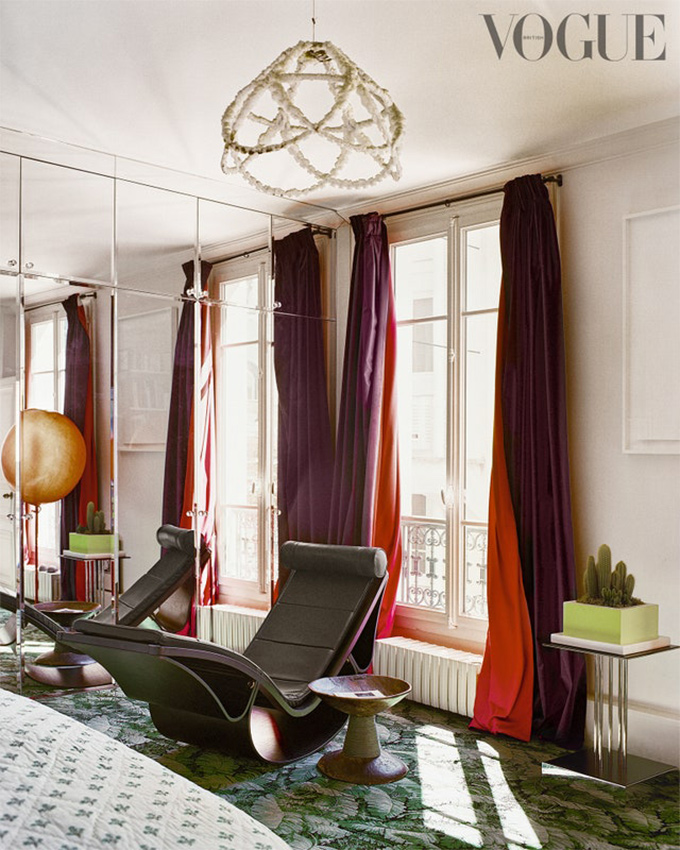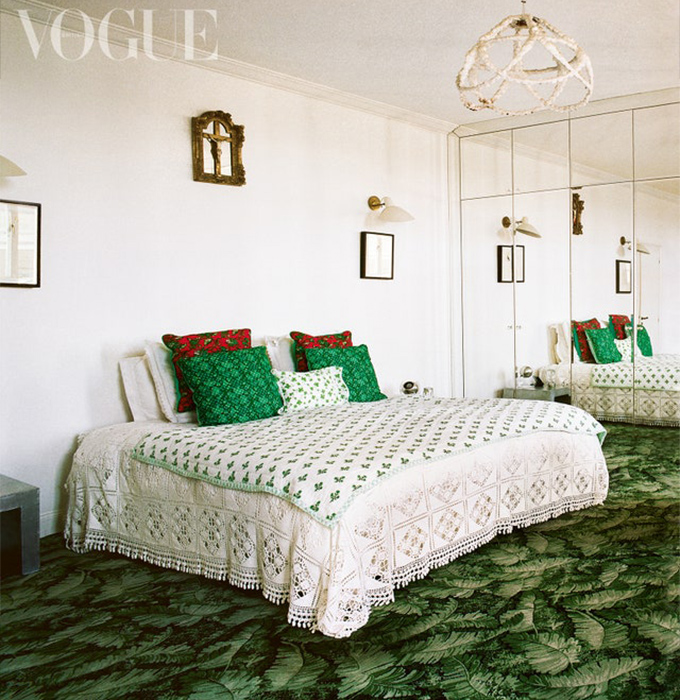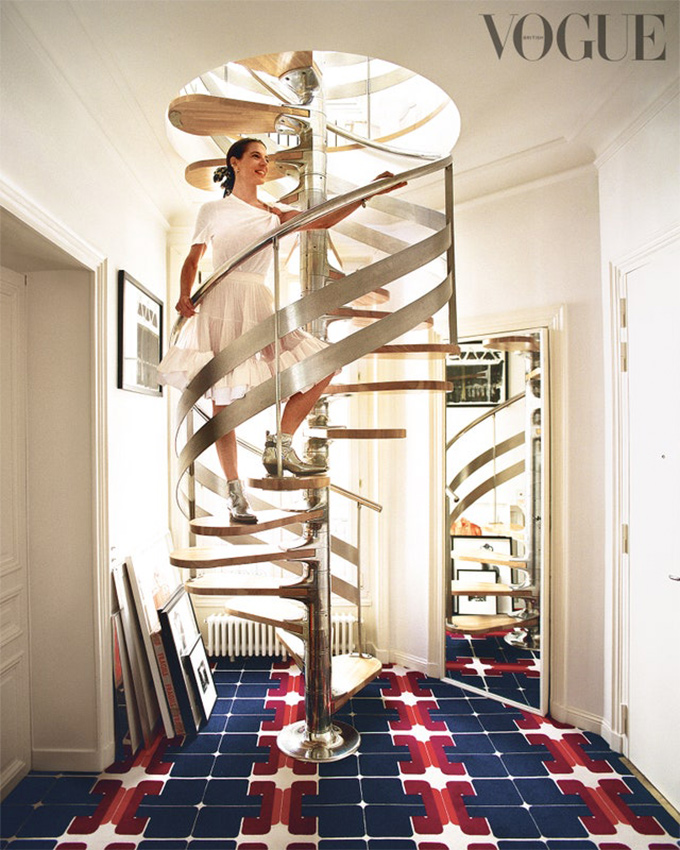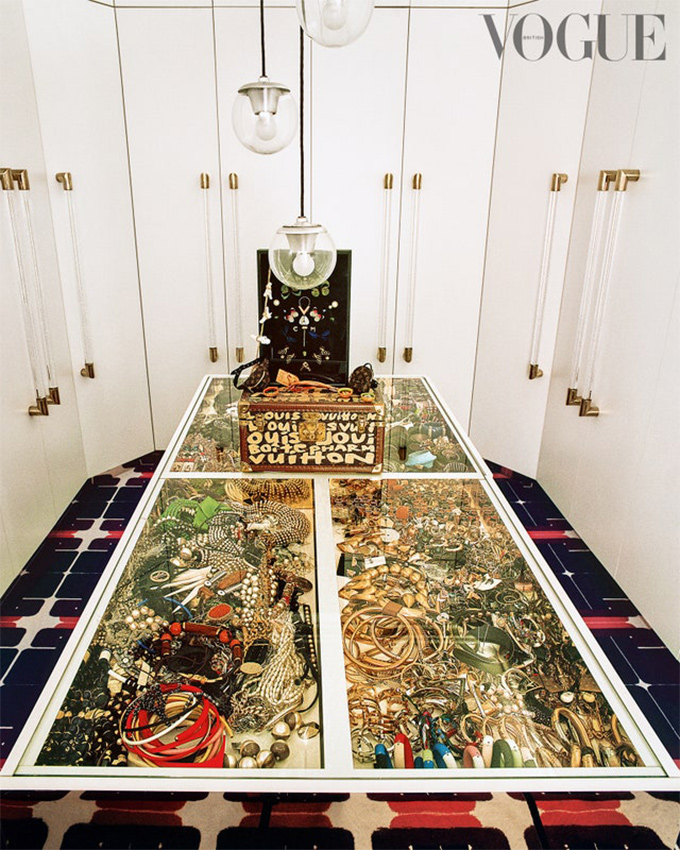“During lockdown, I danced alone a lot,” recalls Camille Miceli, accessories creative director at Louis Vuitton, of the months she spent outside of social exchange. “I love to have friends with me, and not being free to do what I want gets on my nerves very easily.” If she wasn’t dancing with herself, then she was crouching in the one good Wi-Fi spot in a rented house in Cap Ferret, the chic beach town on the west coast of France, where, along with her husband Jérôme, she cobbled together group games of belote (a form of bridge) and Scrabble over Zoom. “My husband and I were playing with two other people. Scrabble was a mess.” Each player had their own IRL board and tiles, to create a consistent game across households. (To the suggestion that there are perfectly serviceable group digital solutions, Miceli admits she is not online much.) The rest of the time she worked to finish up Vuitton’s resort accessories collection. “The DHL guy and I became really good friends,” she says.

The break did for Miceli what it did for many creatives. “This collection was better because I wasn’t distracted,” she says. “The colours for the prints came more easily. That’s normally the hardest part, and I usually go back and redo and redo.” Looking around her soaring Haussmannian duplex, near Paris’s Trocadéro, with its green and blue Pierre Paulin sofa in the living room backed by a terracotta bench of similar wavy proportions, it’s hard to imagine her ever doubting her palette. She went bold for resort, colourblocking scarves and ties with cobalt, vermilion, peacock blue and bright orange. Was Miceli sending a distress flag to the world outside with those vivid colours, or did she just miss her apartment and the full life that normally goes on inside it?

Lockdown has been hard on extroverts, and Miceli certainly is one. Even when she was starting out in the PR department at Chanel, and then at Louis Vuitton under Marc Jacobs, she was the girl to whom everyone gravitated. Charismatic and outgoing, she was the one who pulled off the Balenciaga Lego shoes when no one else dared, who would wear the pink Mongolian shearling, the perfect Alaïa, or – as she did in a mid-Noughties shoot for the erotic magazine Paradis – nothing at all.
So taken with Miceli’s verve was Marc Jacobs that he pulled her out of Vuitton’s PR department to creatively consult and design jewellery. Her statement pieces – such as charm-adorned oversized hoop earrings and chunky, tarnished-aluminium cuffs with big paste stones that seemed to burst from a molten centre – made an immediate impression. In 2009, Miceli moved to Dior. Those double-pearl-stud earrings that absolutely everyone had to have were hers, a sentimental favourite and among her biggest sources of pride as a designer. Since 2014, she’s been back at Vuitton under Nicolas Ghesquière, where her duties encompass fashion jewellery, scarves, belts, accessories for the runway and glasses.

She’s wearing a prototype pair for next season when I visit: deliciously ’70s-style gold-wire frames perfectly suited to her home, which is filled with mid-century-modern furniture and lovingly collected art. Among the treasures in her living room are two sculptures by Tatiana Trouvé, another two by Philippe Hiquily and a forest of Ettore Sottsass ceramics scored at the Porte de Clignancourt flea market. “I didn’t feel easy doing glasses at first,” Miceli says when I compliment hers, “because I’m a maniac about fit and all faces are different.” But she found her footing: one of the first pairs she designed, wireless aviators with lenses framed with gold studs, are still in heavy rotation. She dubbed them “The Party”.
Parties are a subject on which Miceli is an expert. Her stylist mother used to take her on photoshoots with the likes of Guy Bourdin, which partly explains Miceli’s social ease. “There was a lot of insouciance” in her household as a child, she says. “A lot of travelling, a lot of not knowing anxiety, which could never happen for kids today with all their screens.” The peripatetic troupe included her father, an art-book publisher, and her younger brother, now the owner of creative agency Al Dente.

Before everyone had to socially distance, she had dinners for 12 in her kitchen every week. Equipped for a real cook (Miceli shops at the sumptuous Marché Président Wilson and doesn’t shy away from traditional recipes such as boeuf bourguignon), it’s decorated with a wooden nest from Tadashi Kawamata, a Warhol ink and a Claude Lévêque neon. “We always end up dancing here. I’m very classic: George Michael, Prince or Kid Creole and the Coconuts.” The neighbour downstairs “would come up and complain all the time”, so Miceli bought a piece of her apartment to create a new cluster of rooms: an en suite bedroom for her 20-year-old son Romain (who was studying in Britain before Covid hit), a TV room, a small office and her wardrobe, which is the closest thing there is to a church in this home.

It is accessed via Roger Tallon’s wood and chrome helicopter staircase, which makes the trip down feel like walking on flower petals. Once you land, the flooring switches to Codimat carpet in a bold red-and-blue plaid. “I love carpet,” Miceli exclaims. “The feeling on your feet and the happiness it gives.” Happy feet make an instant right turn into the dressing room, adorned with Plexiglas handles that Miceli designed to smarten up simple cabinetry. Behind those doors, under motion-sensor lighting, hang polka dots, lamé, gowns, scarves, rows of bags and an earth-coloured mountain of Les Tropeziennes sandals that speak to vacations past and future.

In the middle of the room is the central shrine, a glass-topped island which, from above, reveals a trove of jewellery. Most of it is of Miceli’s own design. Some of it is wildly proportioned, other pieces are tiny and delicate. Miceli is happy to rummage through for old favourites, such as a velvet and stone collar from the Marc Jacobs days. But it’s the drawers below the display that incite a worshipful hush. “This is very special for me,” she says as she opens one to reveal stacks of Azzedine Alaïa skirts, dresses, sweaters and pants collected over three decades. Alaïa was a close friend of the Miceli family and gave young Camille her first internship as a teenager. “I measured it all, the thickness of each drawer,” she says. “You have to keep his clothes flat because of the knit. I can keep them forever now and they won’t wear out. This was my dream.”
This story was originally published on British Vogue.





